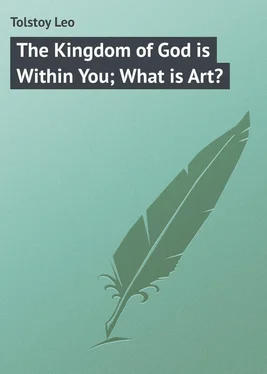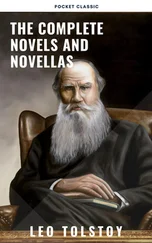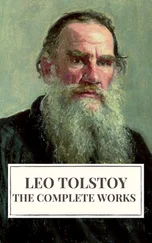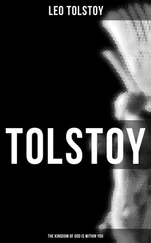XVIII. The Committee Section proposes: —
(1) That the next Congress be held immediately before or immediately after the next session of the Inter-Parliamentary Conference, and at the same places.
(2) That the question of an international Peace Emblem be postponed sine die .
(3) The adoption of the following resolutions: —
( a ) Resolved, that we express our satisfaction at the formal and official overtures of the Presbyterian Church in the United States of America, addressed to the highest representatives of each church organization in Christendom, inviting the same to unite with itself in a general conference, the object of which shall be to promote the substitution of international arbitration for war.
( b ) That this Congress, assembled in London from the 14th to the 19th July, desires to express its profound reverence for the memory of Aurelio Salfi, the great Italian jurist, a member of the Committee of the International League of Peace and Liberty.
(4) That the memorial to the various heads of the civilized States adopted by this Congress, and signed by the President, should, so far as practicable, be presented to each Power by an influential deputation.
(5) That the Organization Committee be empowered to make the needful verbal emendations in the papers and resolutions presented.
(6) That the following resolutions be adopted: —
( a ) A resolution of thanks to the Presidents of the various sittings of the Congress.
( b ) A resolution of thanks to the chairman, the secretary, and the members of the Bureau of this Congress.
( c ) A resolution of thanks to the conveners and members of the sectional committees.
( d ) A resolution of thanks to Rev. Canon Scott Holland, Rev. Dr. Reuan Thomas, and Rev. J. Morgan Gibbon, for their pulpit addresses before the Congress, and that they be requested to furnish copies of the same for publication; and also Stamford Hall Congregational Church for the use of those buildings for public services.
Конец ознакомительного фрагмента.
Текст предоставлен ООО «ЛитРес».
Прочитайте эту книгу целиком, купив полную легальную версию на ЛитРес.
Безопасно оплатить книгу можно банковской картой Visa, MasterCard, Maestro, со счета мобильного телефона, с платежного терминала, в салоне МТС или Связной, через PayPal, WebMoney, Яндекс.Деньги, QIWI Кошелек, бонусными картами или другим удобным Вам способом.
From the Russian version, which Count Tolstoï calls a free translation made with some omissions. After diligent search and inquiry I have been unable to find this catechism among Ballou's works. – Tr.
"The publication of this book ('The Net of Faith') was ended [completed] by the Academy in the last months of the present year (1893)." — Note received by the Publisher from Count Tolstoï while this work was going to press.
I know of but one criticism, or rather essay, for it can hardly be termed criticism, in the strict sense of the word, which treats of the same subject, having my book in view. It is a pamphlet by Troïtzky, called "The Sermon on the Mount" (printed in Kazan). Evidently the author acknowledges the doctrine of Christ in the fullness of its meaning. He declares that the commandment of non-resistance to evil means what it says, and the same with the commandment as to taking an oath. He does not deny, as others have done, the meaning of Christ's teaching, but unfortunately neither does he draw those inevitable conclusions which must result from a conception such as his own of Christ's doctrine. If one is not to resist evil by violence, nor to take an oath, it is but natural to ask: Then what is the duty of a soldier? And what is to be done about taking the oath of allegiance? But to these questions the author makes no reply, and surely a reply should have been given. If he had none to make, it would have been better to have said nothing at all.
The Church is the society of the faithful, established by our Lord Jesus Christ, diffused throughout the world, subject to the authority of its lawful pastors and our holy father the Pope.
The definition of Homiakov, which had a certain success among the Russians, does not help the case, if one believes with him that the Orthodox is the only true Church. Homiakov asserts that a church is a society of men (without distinction between the ecclesiastics and the laity) united by love, and to whom the truth is revealed ("Let us love one another, that we may unanimously profess," etc.), and that such a church is, in the first place, one that professes the Nicene creed, and, secondly, one which, after the division of the churches, refused to recognize the authority of the Pope and the new dogmas. With such a definition as this, the difficulty of identifying a church which is united by love with a church professing the Nicene creed, and the accuracy of Photius, as Homiakov would have it, is still greater. Hence the statement of Homiakov that this church united by love, and therefore holy, is the same as that of the Greek hierarchy, is still more arbitrary than the assertions of the Catholics and the old Greek Orthodox believers. If we admit the existence of the Church according to the idea of Homiakov, that is, as a society of men united by love and truth, then all that any man can say in regard to it, is that it would be most desirable to be a member of that society, – if such an one exists, – that is, to live in the spirit of love and truth; but there are no outward manifestations by which one could either acknowledge one's self, or recognize others as members of this holy society, or exclude one's self from it, for there is no outward institution to be found which corresponds to that idea.
Who are those outside the Church? The infidels, heretics, and schismatics.
Thereby may be the true Church known that in it the word of God is taught plainly and clearly, without human additions, and that sacraments are administered faithfully according to the teaching of Christ.
The ikon of the Virgin which stands in a chapel in the heart of Moscow, and which is the object of a special veneration to the Russians. – Tr.
The unity of this social and pagan life-conception is by no means destroyed by the numerous and varied systems which grow out of it, such as the existence of the family, of the nation, and of the State, and even of that life of humanity conceived according to the theory of the Positivists.
These multifarious systems of life are based upon the fundamental idea of the insignificance of the individual, and the assurance that the meaning of life is to be sought and found only in humanity, taken in its broadest sense. – Author.
Here, for example, is a characteristic expression of opinion in the American periodical, The Arena, for November, 1890, from an article entitled "New Basis of Church Life." Discussing the significance of the Sermon on the Mount, and especially the doctrine of non-resistance to evil, the author, having no reason for obscuring its meaning as the ecclesiastics do, says: —
Читать дальше












